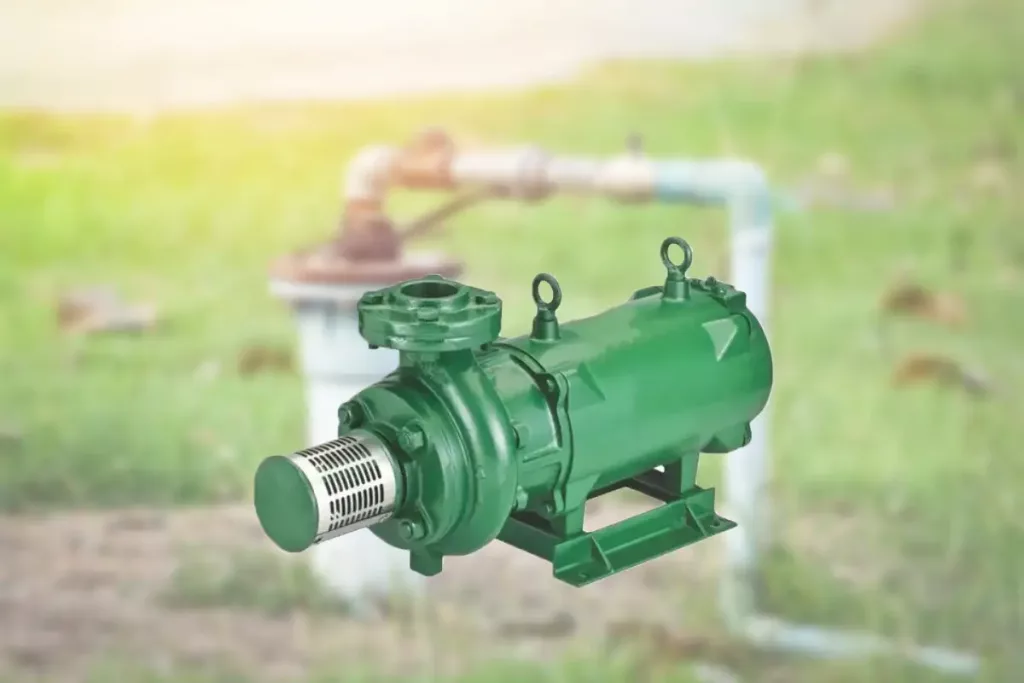
Similar to conventional wells, deep well submersible water systems operate by pumping water in the desired direction.
Winterization of a submersible well pump is a vital process to keep your pump safe from freezing point. This means, if the water inside the submersible well pump froze due to extreme weather conditions outside, then it not only damages the pump but also the entire system of safe water supply.
Winterizing a submersible well pump is important to protect it from potential damage caused by freezing temperatures and harsh winter conditions. Submersible well pumps are typically located deep within the well, and their components, such as the motor and plumbing, can be vulnerable to cold weather. Here are some reasons why you might need to winterize a submersible well pump:
- Freezing temperatures: In cold climates, the water in the well and the pump system can freeze during winter. If the water freezes inside the well or the plumbing leading to the pump, it can damage the pump, pressure tank, or other components.
- Water pressure tank protection: Submersible well pumps are often connected to a pressure tank that helps regulate water pressure in your home. If the pressure tank or its plumbing is exposed to freezing temperatures, it can lead to cracks or damage, affecting your water supply.
- Preventing pump damage: Extremely cold temperatures can cause the submersible pump’s motor to freeze or experience operational issues. Winterizing the pump can help prevent damage to the motor and other sensitive components.
- Maintaining water supply: Without proper winterization, your well pump system may fail, leaving you without access to water during the winter months. Winterizing ensures your well pump continues to operate smoothly and reliably.
How to winterize a submersible well pump?
Follow the steps for understanding the way to winterize your submersible well pump in the right manner and keeping your pump from freezing in this wintertime.
Like other materials, the metal used in submersible well pump becomes smaller while the temperature continuously drops but in the case of water, it expands while the temperature is dropping and freezing. And for this combination, a broken cast iron pump can result and burst water lines. So, before starting the winterization process, ensure to shut off the water supply lines as well as disconnect them from any power.
Step 1: Finding and release the drain plug
You have to find the drain plug of your submersible well pump and release the drain plug to allow water inside to drain. Make sure that the pump drains as much water as feasible. After that, drain the suction and discharge pipes and you cannot start step 2 until you do not replace the drain stopper. For avoiding any kind of damage to the pump, you should keep in mind that after drinking, the remaining water must be removed.
Step 2: Putting Propylene Glycol into the pump
Food-grade Propylene Glycol can be used to fill the body of the submersible well pump. The motive behind using this is to mix the remaining water left inside the submersible well pump and help in the winterization process. But, do not mix food-grade Propylene Glycol with automotive antifreeze used in car radiators or ethylene glycol as it is extremely poisonous and should not be used for water.
Step 3: Blowing out the water lines by using Compressed Air
The suction and discharge pipes of the submersible well pump have to blow out with compressed air. You have to use an air hose with the appropriate air fittings connections to fix this situation properly. Apart from that, the power adaptor for the pump should be taken out of the outlet. Remove the cords connecting it to the system if it is connected to any other systems.
Step 4: Use a flat-head screwdriver to loosen the clamps
You can use a flat-head screwdriver to loosen the clamps that hold water pipes and hoses. For removing the clamps, turn the screwdriver in the other direction. While the line contracts and stretches due to temperature fluctuation, this prevents the clamps from tearing and ripping the lines.
Although, deep well systems do not require the pumps removed except if the temperature is extremely low. Set the pump in a shallow pan and hold the pan parallel to the pump so that water flows into the pan and prevents the pump from freezing. The water should be drained from the pump. To avoid freezing issues, you can store the pump in a warmer place.
After winter is over, it is also necessary to de-winterize your submersible well pump by going through the above-mentioned procedures backwards. Yes definitely, you have to prime your submersible well pump once more if necessary.
First, disconnect the pump from the electrical outlets and check the connectors and pump for any kind of damage. You have to find the prime plug which is typically on the pump head and if possible, open the release valves. You have to locate a lead-free hose and wash it with water and the hose for priming a pump is a simple and frequent method. If necessary, the pump has to connect and repeat the full cycle. Read More>>
[…] It is also advisable to completely unplug any detachable pumps from your system and keep them indoors for the winter. It’s possible that the pump is hidden by a cover in an underground pit. Any fully integrated pumps should be covered with a plastic bag. Also Read>> […]